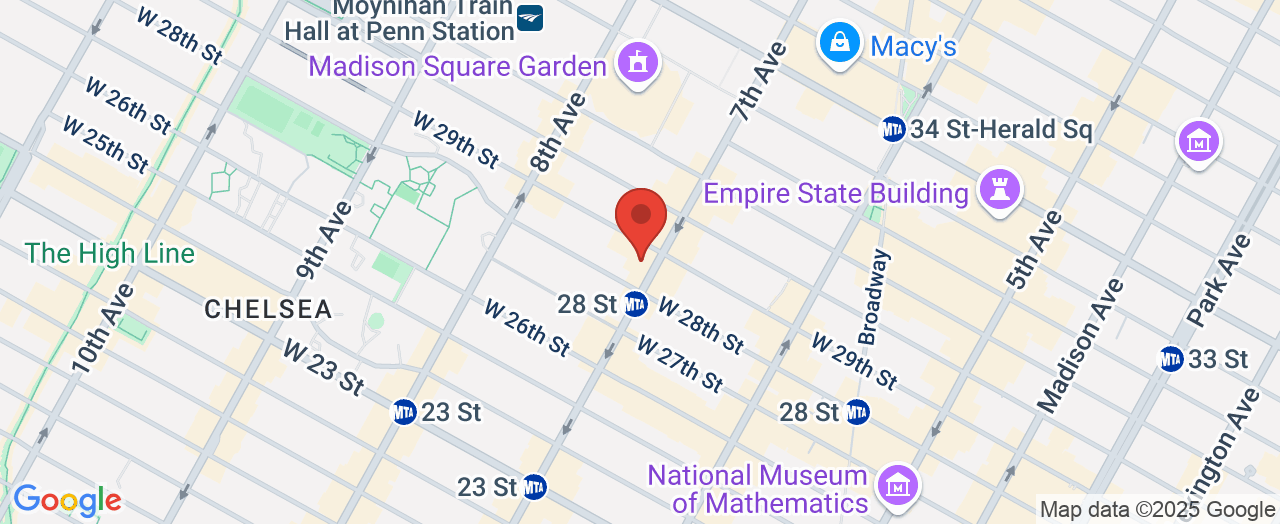Why Recognizing Bedsores Is Crucial When Warning Signs Are Easy to Dismiss
Have you ever wondered if something as common as mild skin redness could hint at something much more serious beneath the surface? With an aging population and growing reliance on nursing homes, understanding the signs of nursing home neglect has never been more critical—especially when it comes to bedsores, also known as pressure ulcers. According to recent studies, as many as 28% of nursing home residents and 15% of hospitalized patients develop bedsores, with numbers climbing amongst the most vulnerable patients. These injuries aren’t just patches on the skin—they’re often clear indicators of a much deeper problem: neglect that can lead to severe pain, infection, prolonged hospital stays, or even premature death.
Despite their frequency, the early indicators of neglect in institutional care environments often evade notice until the consequences become severe. Many families trust that caregivers will provide compassionate, attentive care, yet overlooked symptoms such as unusual skin changes, unexplained pain, or behavioral shifts can be early warnings of neglect. This article will walk you through ten frequently disregarded signs—like the development of bedsores—that signal nursing home neglect, so you can take timely action to protect your loved ones. Understanding these signals can mean the difference between early intervention and irreversible harm.

Understanding Bedsores: The Silent Signals That Should Never Be Ignored
Bedsores, medically referred to as pressure ulcers or decubitus ulcers, develop when prolonged pressure on the skin restricts blood flow, causing tissue damage and breakdown. While the term might sound clinical, its implications are painfully real: for those who are immobile or dependent on caregivers—such as nursing home residents—these wounds can be a daily threat. Bedsores commonly occur in individuals who are left in the same position for hours without being moved, particularly over bony areas where skin and tissue are compressed between a bone and an external surface. Early-stage bedsores may appear as discolored patches, tenderness, or areas that feel unusually hot, but can quickly evolve into open, infected wounds if prompt care is not provided.
The consequences of missing these early signs go far beyond discomfort. Without intervention, bedsores can escalate to deep ulcers that expose muscle and bone, creating sites for dangerous infections, sepsis, and a dramatic reduction in quality of life. What is most startling is that many of these injuries are preventable with vigilant care. Yet, a lack of regular repositioning, insufficient skin assessments, poor nutrition, and delayed treatment are all too common in understaffed or inattentive facilities. The result? Bedsores not only inflict severe physical pain but signal a larger systemic issue in how some nursing homes and hospitals prioritize or neglect their residents' basic needs.

Why Early Detection of Bedsore Symptoms Protects Loved Ones from Lasting Harm
Sinel & Olesen, PLLC, a leading authority in bedsore-related legal cases, recognizes that the earliest symptoms—such as swelling, reclining discomfort, or minor discoloration—often go unreported or overlooked. Catching these subtle signs is crucial, as neglect can rapidly transform minor skin irritation into wounds that threaten mobility and overall health. According to information found on NYC Bedsore Lawyer, if a loved one suffers a bedsore, it is not simply a matter of poor luck; it is often a consequence of neglect. Facilities have a responsibility to prevent these injuries by regularly turning immobile patients, maintaining meticulous skin care, and ensuring adequate nutrition and hydration.
The value of early detection extends beyond physical relief. Every untreated bedsore represents a breach of trust and a signal to act—legally or medically—to protect someone’s dignity and wellbeing. Proper monitoring enables family members and advocates to demand accountability, whether through better communication with caregiving staff or, when necessary, legal action against institutions that failed in their duty of care. With awareness comes power: knowing which signs to look for ensures that vulnerable residents can receive timely care, spare themselves needless suffering, and regain control over their health or that of someone they love.

Warning Signs Beyond the Obvious: What Every Family Should Monitor
While open sores and wounds are telltale markers of neglect, many warning signs manifest in more subtle ways long before a bedsore becomes visible. Increased swelling, areas of skin that persistently feel hot, unexplained sleep disturbances, and behavioral changes such as irritability or withdrawal are all signals that warrant further attention. If a family member begins to display unusual discomfort when repositioned, or if areas of the skin develop persistent redness or tenderness, these subtle signs should never be brushed off as normal “aging” complaints.
Other red flags include unexplained weight loss, dehydration, neglected personal hygiene, and inconsistent documentation of care in the resident’s medical records. Facilities that consistently appear understaffed or in which staff seem rushed and inattentive may not be providing the necessary frequency of repositioning or skin checks. When warning signs are combined—or when caregivers delay responding to reported symptoms—the risk for rapid bedsore development increases exponentially, amplifying the need for immediate advocacy on the patient’s behalf.
Understanding the Link Between Staffing Levels and Neglect-Related Injuries
Chronic understaffing stands out as a pervasive root cause of nursing home neglect. Even the best-trained caregivers can only respond to needs they are aware of—and when too few hands are available, basic interventions like repositioning patients every two hours or conducting regular skin assessments may be skipped. Modern bedsore litigation increasingly hinges on demonstrating facility-wide policies and practices, revealing that systemic issues—rather than isolated lapses—often drive the development of pressure ulcers. When facilities cut corners on staffing, residents pay the price in the form of delayed, inconsistent, or inadequate care.

This reality makes it essential for families and advocates to observe not just the physical condition of their loved ones, but also to take note of the caregiving environment: Are requests for help answered promptly? Are staff members visibly stretched thin or showing signs of burnout? By recognizing the patterns that lead to neglect, families can raise concerns early—before a minor issue turns into a medical crisis.
How Proper Evidence Collection Supports Accountability and Better Outcomes
Documentation provides the foundation for both prevention and accountability in cases of bedsore-related neglect. Collecting accurate records—such as photographs of wound progression, notes from family members regarding changes in behavior or condition, and all communication with care facilities—can make a life-changing difference if a legal claim becomes necessary. As outlined on NYC Bedsore Lawyer, early and comprehensive evidence gathering is key: families may need to secure medical records quickly before they are altered or lost, and testimony from staff, other residents, or visitors can corroborate stories of inadequate care.
Besides laying the groundwork for legal redress, diligent recordkeeping equips families to advocate more effectively day-to-day. By flagging missed repositionings, skipped meals, or unaddressed injuries, family members can press for immediate changes to a loved one’s care plan—often spurring improvements that safeguard others in the same facility as well. Practical vigilance helps to ensure that neglect does not become routine, empowering loved ones to demand accountability and uphold a higher standard of care.
Sinel & Olesen, PLLC’s Legal Perspective on Bedsore Prevention and Justice
Sinel & Olesen, PLLC approaches the issue of bedsores not solely as a legal challenge, but as a matter of dignity and respect for the most vulnerable members of society. Their decades-long experience highlights the critical importance of rigorous advocacy, early investigation, and the assembly of a strong expert team ranging from wound care specialists to skilled trial attorneys. Their philosophy emphasizes client care, respect, and providing families with honest assessments—never applying pressure, but instead empowering clients to make informed decisions about potential legal action.
As described on their website, advocacy for bedsore victims transcends monetary settlements; it is about delivering justice and ensuring negligent facilities are held to account. Each case represents a broader effort to raise standards of care, call attention to systemic negligence, and ensure that every patient is treated with dignity. Sinel & Olesen’s commitment to detailed documentation, expert testimony, and compassionate communication serves not only clients but the larger mission of improving patient safety across New York’s healthcare system.
Through their meticulous, compassionate approach, Sinel & Olesen, PLLC demonstrate that real justice is not only about righting individual wrongs but about driving institutional change. By focusing on relationship-building, clear communication, and genuine support through each phase of the legal process, they enable families to move from feelings of helplessness to empowered advocacy.
First-Hand Validation: Why Accountability and Closure Matter in Bedsore Neglect Cases
There is often no greater reassurance than hearing the voice of someone who has navigated the process and found closure after tragedy. The following testimonial, shared by the loved one of a bedsore victim, highlights the significance of standing up for those affected by neglect and the relief that comes when justice is served:
I would recommend Sinel & Olesen, PLLC, to any family with a case involving bedsores or medical issues against a nursing home or hospital. We were not only pleased with the monetary award, but to see these facilities held accountable. We finally had some closure.
Stories like these are reminders that while the journey to accountability may be challenging, achieving justice not only brings closure to individual families but holds institutions to higher standards. By recognizing early signs of neglect and seeking expert guidance, others can protect their loved ones and pursue meaningful change when harm occurs.
The Last Line of Defense: How Recognizing Bedsores Can Transform Elder Care Outcomes
The early recognition of bedsore symptoms stands as one of the most effective defenses against the wider issue of nursing home neglect. With the help of resources like Sinel & Olesen, PLLC—who bring unmatched expertise and a steadfast commitment to justice—families have the means to identify trouble long before lasting harm is done. At its heart, the fight against bedsores goes beyond skin-deep wounds; it’s about preserving dignity, comfort, and the fundamental right to proper care for elderly and vulnerable patients. Understanding the warning signs, documenting evidence, and seeking expert support can turn anxiety and uncertainty into empowerment and protection. Ultimately, greater awareness of bedsores serves as both a call to advocacy and a step toward a higher standard of elder care.
Contact the Experts at Sinel & Olesen, PLLC
If you’d like to learn more about how identifying and addressing bedsore injuries could benefit your loved one's care, contact the team at Sinel & Olesen, PLLC.
📍 Address: 330 7th Ave 10th floor, New York, NY 10001, USA
📞 Phone: +1 212-465-1000
🌐 Website: http://nycbedsorelawyer.com/
Sinel & Olesen, PLLC—Location and Hours
🕒 Hours of Operation:
📅 Monday: 9:00 AM – 5:30 PM
📅 Tuesday: 9:00 AM – 5:30 PM
📅 Wednesday: 9:00 AM – 5:30 PM
📅 Thursday: 9:00 AM – 5:30 PM
📅 Friday: 9:00 AM – 5:30 PM
📅 Saturday: ❌ Closed
📅 Sunday: ❌ Closed

 Add Row
Add Row  Add
Add 




Write A Comment